Key takeaways:
- True gender equality advocacy encompasses a fair space for all genders and requires listening to diverse voices, emphasizing intersectionality.
- Community service is essential for fostering empathy, building networks, and transforming lives, demonstrating the impact of collective efforts against gender inequality.
- Challenges in advocacy include resistance to change, lack of resources, and emotional toll, highlighting the importance of resilience and support among advocates.
- Effective advocacy strategies involve building coalitions, using storytelling to connect with audiences, and remaining adaptable to changing community needs.
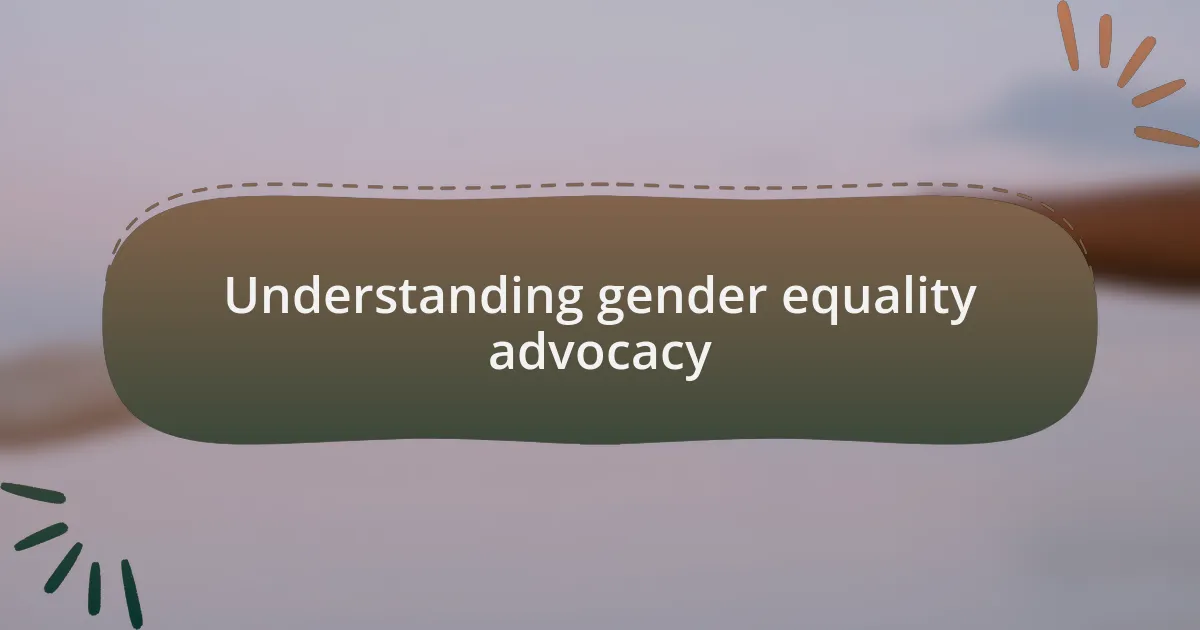
Understanding gender equality advocacy
Gender equality advocacy is more than just a concept; it’s a movement that seeks to challenge the societal norms that have long dictated gender roles. I remember attending a workshop where someone asked, “What does gender equality truly look like to you?” That question stayed with me, prompting a deep reflection on how our perceptions shape our advocacy efforts.
As I engaged more with community service aimed at gender equality, I found that it wasn’t solely about women’s rights but about creating a fair space for everyone, regardless of gender. One memorable experience was volunteering at a local shelter where I met men and women striving for their voices to be heard. Their stories made me realize that true advocacy involves listening and amplifying those voices, not just speaking on their behalf.
When we talk about gender equality, it’s vital to consider intersectionality—how overlapping social identities can impact individuals’ experiences. I recall meeting a young woman from a marginalized community who shared her struggle against both gender bias and racial discrimination. This reinforced for me that advocacy must be inclusive; we have to understand the complexities of each person’s situation to advocate effectively.
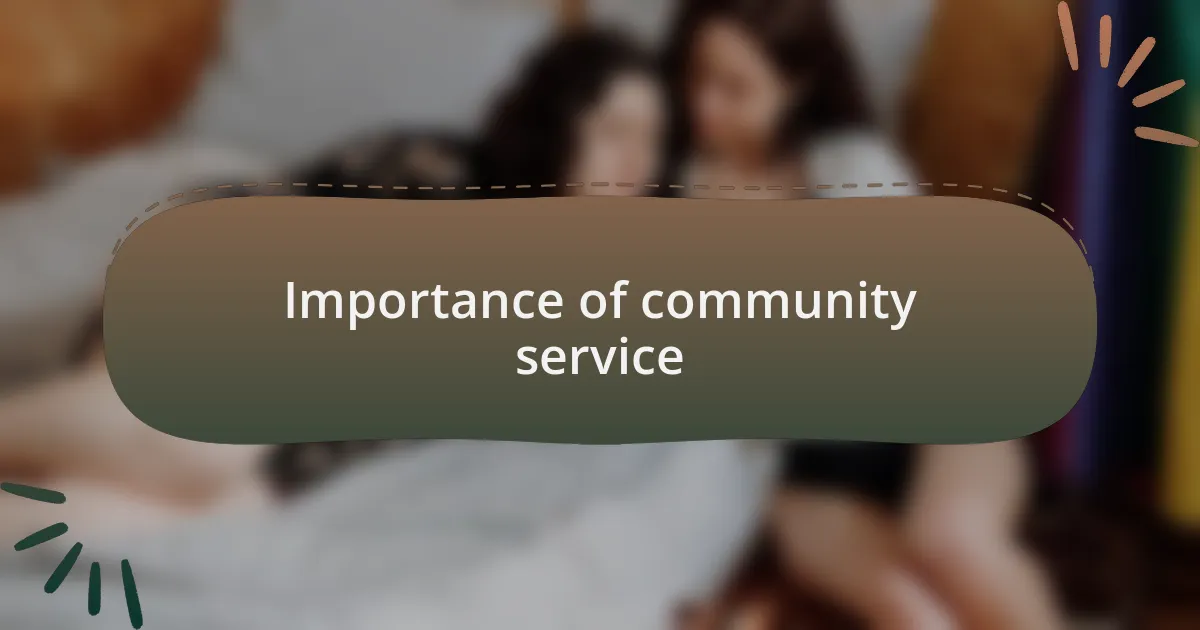
Importance of community service
Community service plays a crucial role in bridging the gap between theory and action in any advocacy effort. Reflecting on my own experiences, I remember a day spent organizing a workshop focused on empowering young girls through education. Watching their eyes light up with newfound knowledge reminded me that these small moments of impact can lead to significant societal shifts.
Engaging in community service fosters empathy and understanding. I recall volunteering with a diverse group of individuals, each with their unique backgrounds and stories. One woman, who opened up about her trajectory through economic hardship and gender-based challenges, challenged me to reconsider what it means to uplift others. This experience solidified my belief that community service is not only about giving but also about learning from those we aim to support.
Moreover, community service cultivates networks of solidarity and support. I often think about the connections I’ve formed with fellow advocates during service projects. It’s a reminder that combating gender inequality is not a solo endeavor; rather, it thrives on collaboration and collective effort. How can we expect to dismantle ingrained societal barriers without standing together? This interconnectedness fuels our momentum and inspires each of us to continue championing for gender equality.
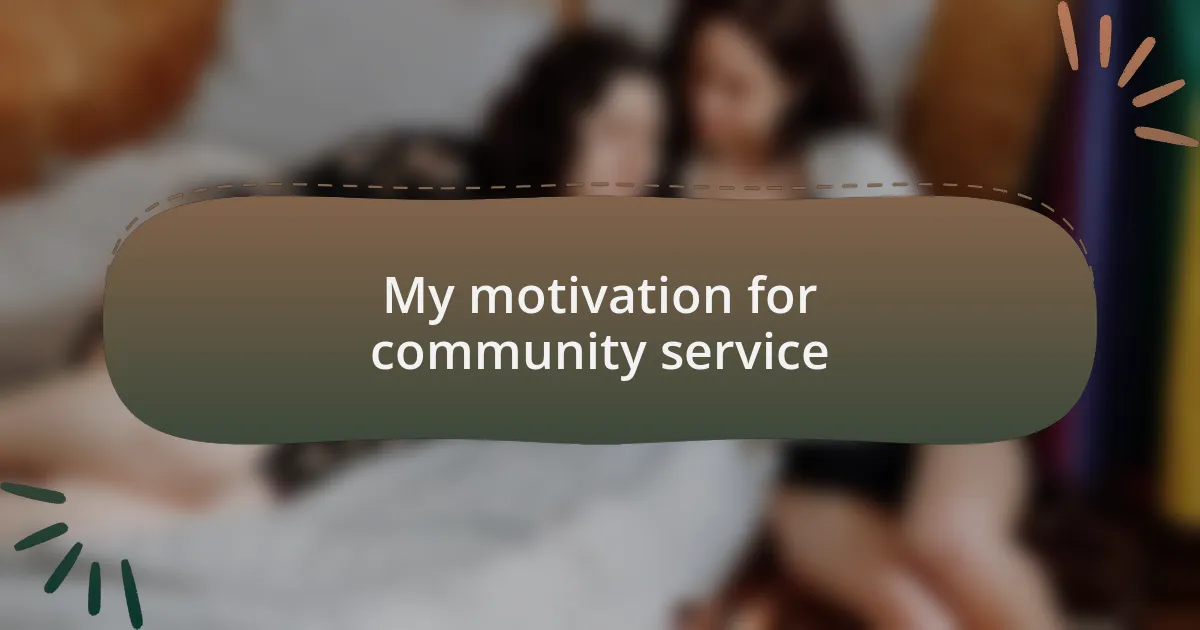
My motivation for community service
When I reflect on my motivation for community service, I often think back to my childhood. Growing up in a neighborhood where opportunities were limited, I witnessed firsthand how access to resources could transform lives. It stirred something within me—a desire to create pathways for others that I had the privilege to navigate myself.
A pivotal moment for me came during a community event where I met a courageous young woman named Amina. Her story of resilience in the face of adversity truly moved me. I found myself questioning what I could do to support those who, unlike me, were still finding their footing. Amina’s strength ignited a passion that pushed me to become actively involved in advocacy work, reminding me that every small step toward support has the potential to create lasting change.
I’ve realized that my motivation is deeply intertwined with the belief that we all have a shared responsibility to uplift one another. Each time I engage in service, I reflect on the question: How can I make a difference today? This commitment to making a tangible impact drives me forward. It’s this collective aspiration for a more equitable world that fuels my dedication to community service, continuously inspiring me to take action.
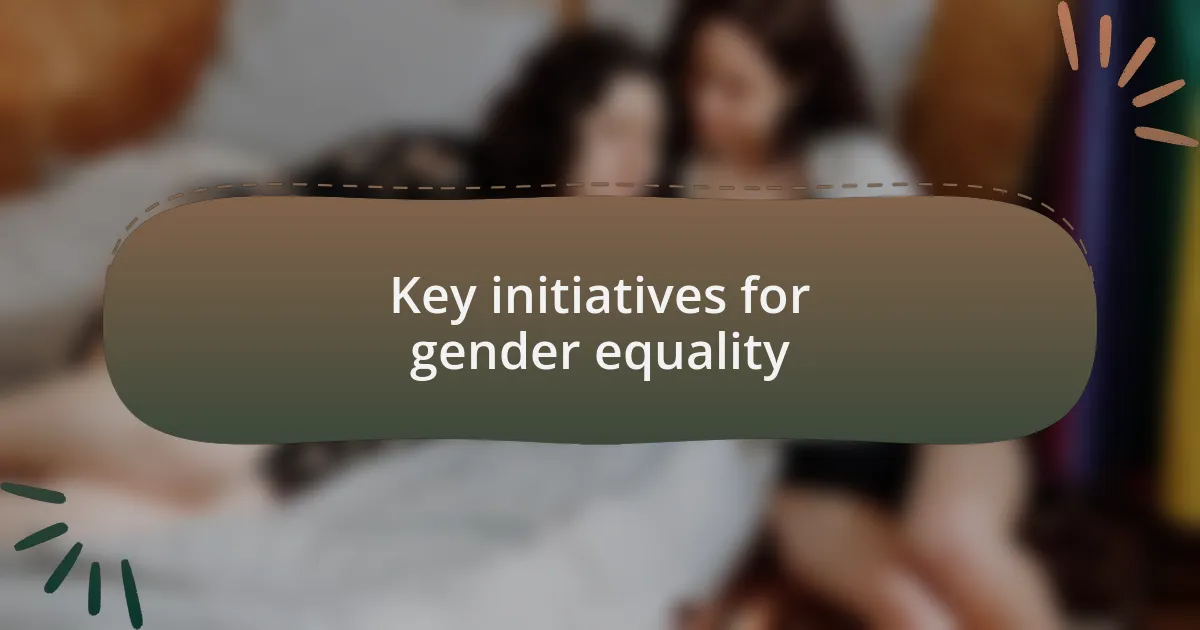
Key initiatives for gender equality
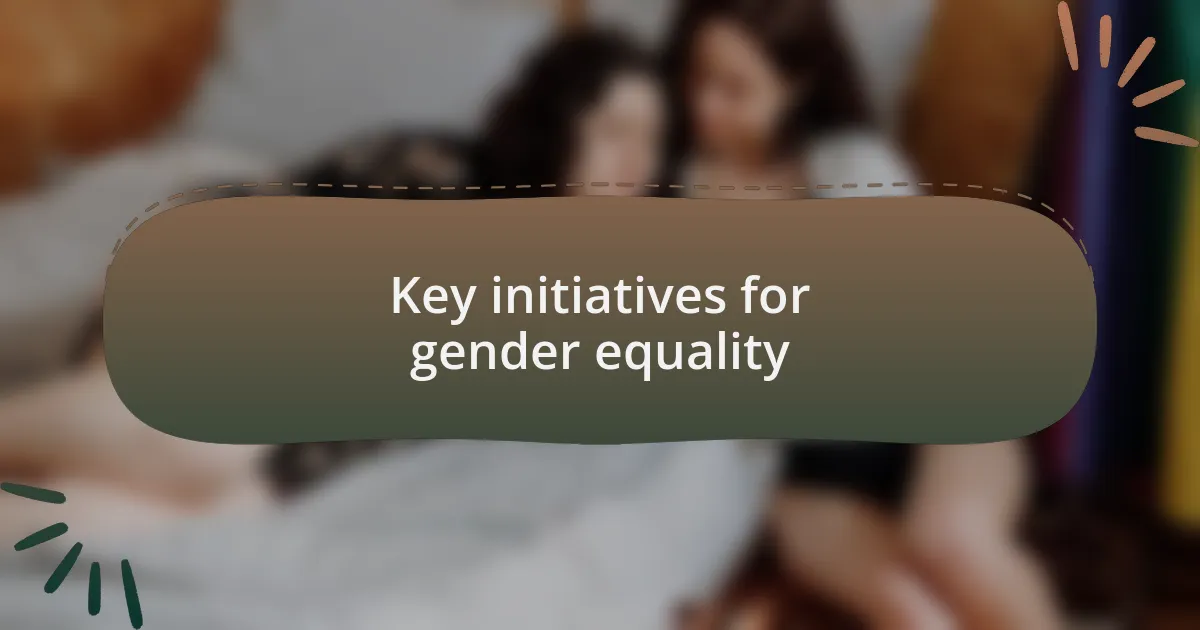
Key initiatives for gender equality
One crucial initiative I’ve witnessed in my community is the establishment of women’s empowerment programs. I remember attending a workshop where local women shared their entrepreneurial dreams. It was inspiring to see them gain confidence, realizing they could turn their skills into businesses. How often do we underestimate the power of a supportive environment?
Another impactful effort is the promotion of education for girls, which I experienced firsthand when volunteering at a local school. There was a young girl named Fatima who had been hesitant to pursue her studies due to cultural barriers. Through a mentorship program, she not only graduated but later became a role model for younger girls. Seeing her transformation reinforced my belief that education is transformative and essential for achieving gender equality.
Additionally, I’ve been involved in advocacy campaigns focused on legislative reforms to protect women’s rights. I recall rallying alongside activists, advocating for policy changes that promote equal pay and combat domestic violence. It was a powerful reminder that these initiatives aren’t just about numbers—they’re about real lives and stories. When we come together and demand change, we create a ripple effect that can alter the landscape for generations to come.
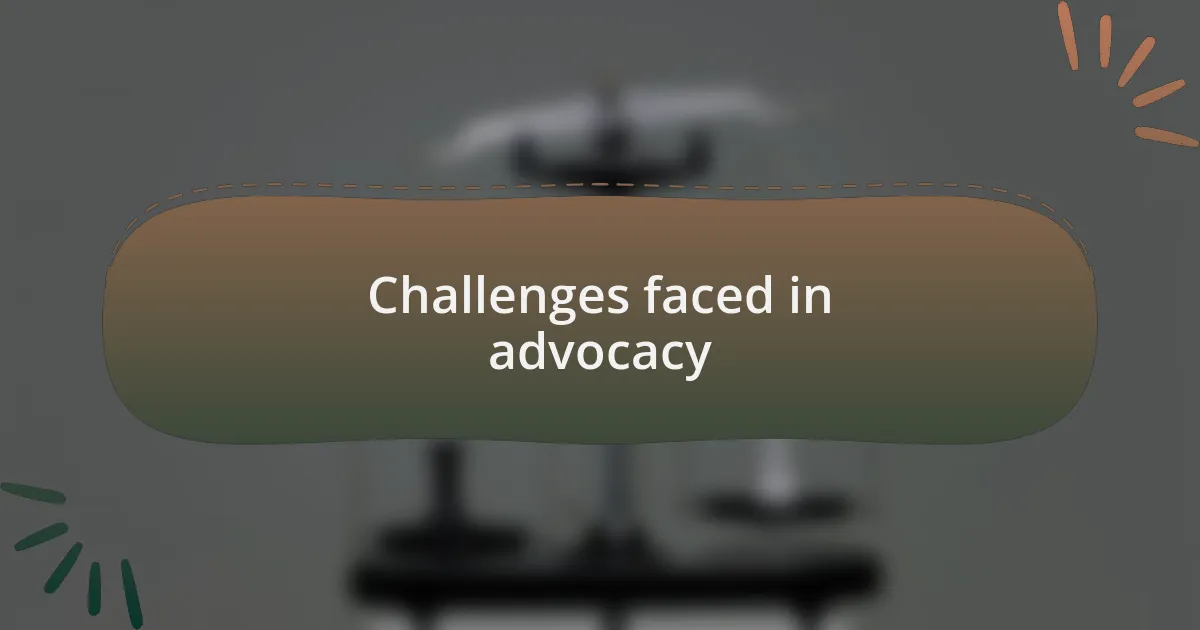
Challenges faced in advocacy
Advocacy often faces significant resistance, especially when challenging deeply rooted societal norms. I remember attending a community meeting where I proposed a workshop to discuss gender equality, only to be met with skepticism. It was disheartening to see how some community members were resistant to even considering the idea, reflecting the larger cultural barriers we often encounter.
Another challenge I’ve experienced is the lack of resources and funding for advocacy initiatives. I recall organizing an event to raise awareness about gender inequality, but we struggled to secure financial support. It made me acutely aware of how limited resources can stifle important conversations and initiatives, leaving advocates feeling overwhelmed and under-equipped.
The emotional toll of advocacy work cannot be overlooked either. I often find myself grappling with feelings of frustration and exhaustion, especially after hearing heartbreaking stories from women who have faced discrimination. Is this weariness inevitable in our fight for change? I’ve come to realize that while it can feel isolating, sharing these burdens with fellow advocates is vital for both our resilience and our mission.
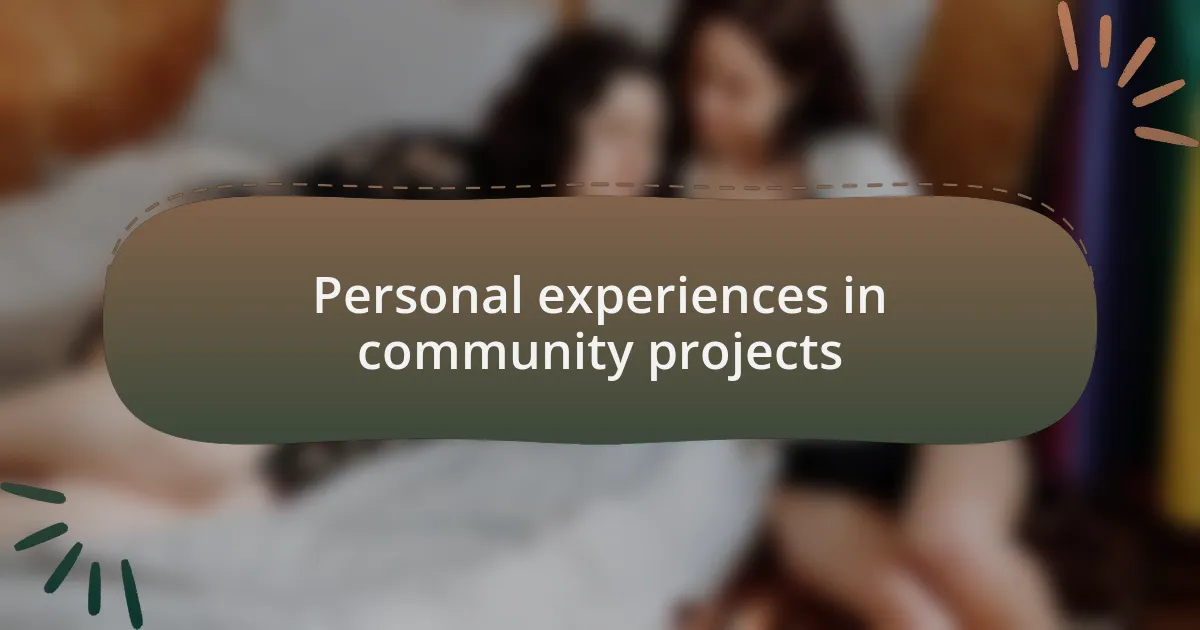
Personal experiences in community projects
Participating in community projects has always opened my eyes to the diverse experiences people face. I vividly remember volunteering at a local shelter where we provided resources for single mothers. The strength and resilience I witnessed were inspiring, yet it also made me realize the overwhelming obstacles these women encounter daily. How do they find hope amid such challenges?
In another project, I helped facilitate a mentorship program for young girls in my city. Sharing my journey with these bright, motivated individuals was fulfilling, yet it struck me how easily their spirits could be dampened by societal expectations. Seeing them blossom when given the right support reminded me of the power of connection in advocacy. It’s a humbling experience to reflect on who has shaped our paths and who we, in turn, can uplift.
While every community project I engage in adds value to my understanding of gender issues, some moments linger in my mind. For instance, during a community clean-up event aimed at promoting urban renewal, I had the chance to speak with women about their safety concerns in public spaces. Their stories resonated with me deeply and made me question, how can we ensure that every woman feels safe in her community? Engaging in these conversations helps me not only to advocate for changes but also to cultivate empathy and understanding among community members.
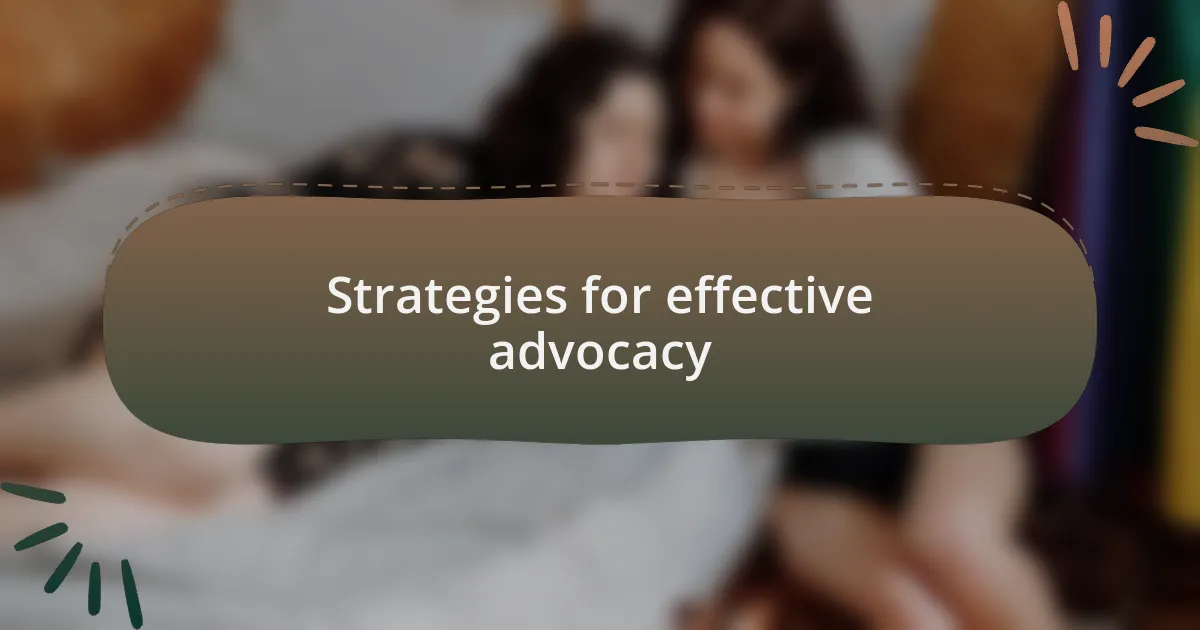
Strategies for effective advocacy
One effective strategy for advocacy that I’ve embraced is building coalition networks. In my experience, collaborating with various organizations amplifies our voices and magnifies our impact. I recall a workshop where we united local businesses, educators, and activists to address gender equality in the workplace. The synergy we created was remarkable, as each stakeholder brought different perspectives and resources, making our efforts far more potent than any one group could achieve alone. This raises a question: how do we identify and engage the right partners in our advocacy efforts?
Another strategy I find particularly vital is storytelling. Sharing personal narratives can create a bridge that fosters understanding and empathy. I once shared my own story in front of a local council about the challenges of gender biases I faced in my career. The vulnerability I displayed not only resonated with many in the audience but also sparked important conversations about creating policies that support women. When we voice our experiences, we empower others to join the conversation—why not use our voices to inspire change?
Lastly, it’s essential to remain adaptable and open-minded. Throughout my journey, I’ve encountered unexpected challenges that required me to rethink my approaches. During a fundraising campaign, a sudden shift in community priorities required us to redirect our focus. By listening actively to the needs of those we aim to serve, I learned that real advocacy is about being responsive and flexible. How many times have we missed opportunities simply because we weren’t willing to change direction? In this work, staying receptive to new ideas is crucial for effective advocacy.